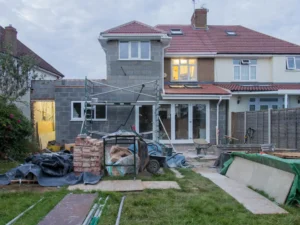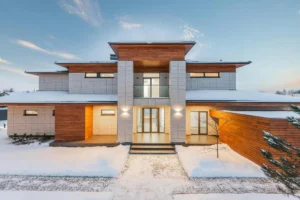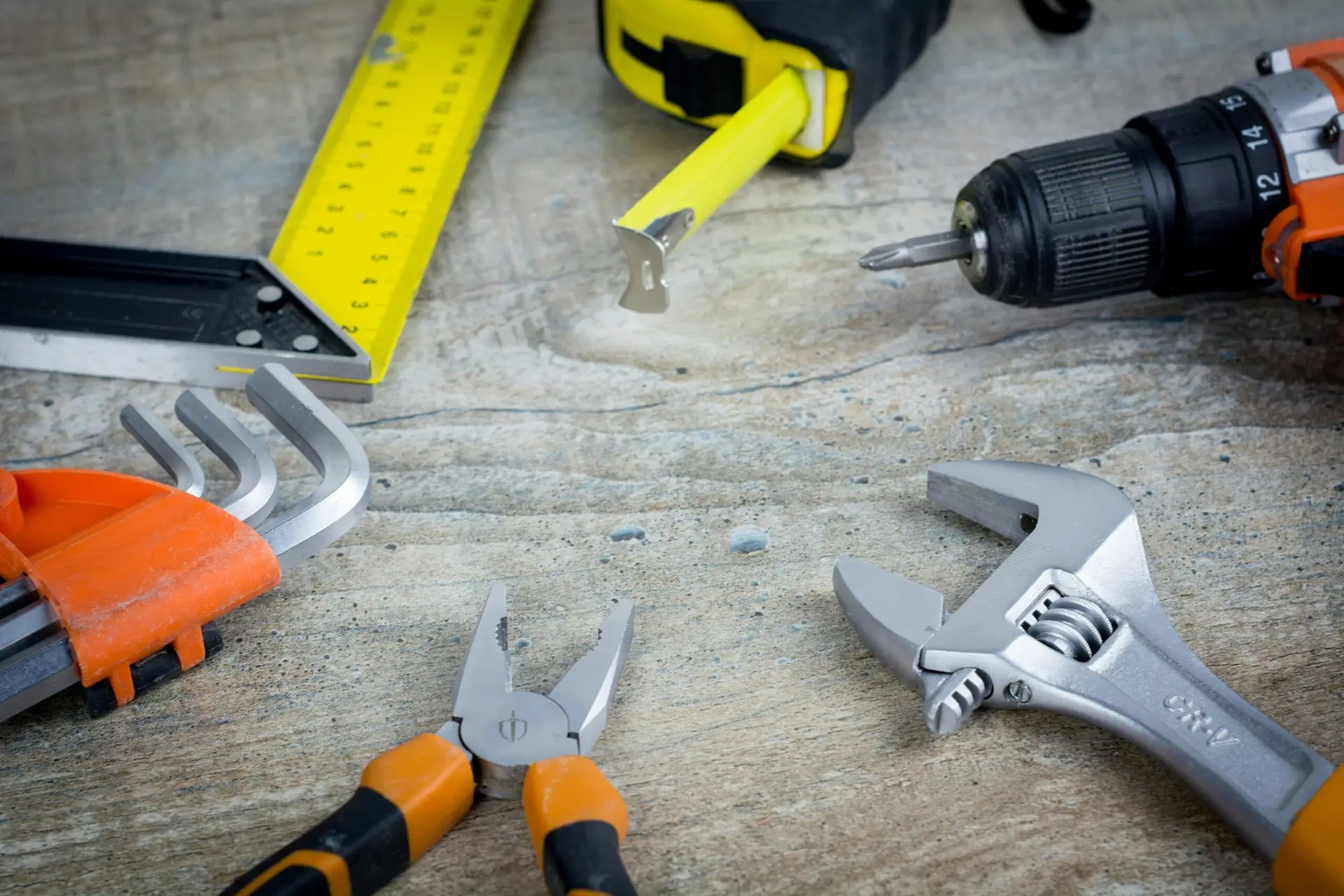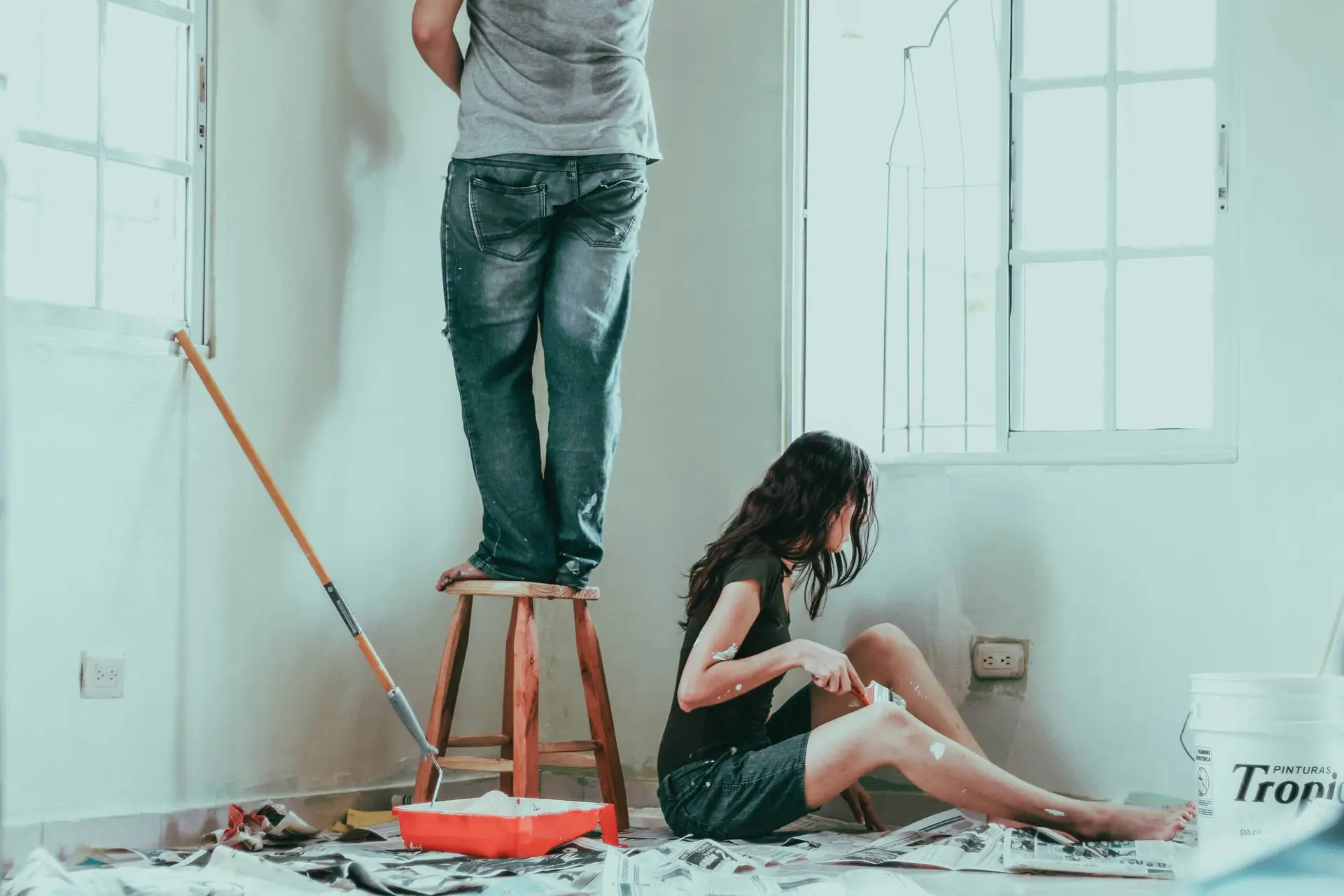Introduction to Outdoor Winterization
As winter approaches, the importance of properly winterizing outdoor faucets and sprinkler systems cannot be overstated. Homeowners must take proactive measures to safeguard their plumbing fixtures from the harsh effects of cold temperatures. Failing to winterize these systems can result in severe complications, such as burst pipes, which may lead to significant home repair costs and headaches during the chilly months.
Outdoor faucets, or hose bibs, are particularly susceptible to freezing. When water remains in the pipes as temperatures plummet, it expands and can cause the pipes to crack or rupture. Such damage not only affects your outdoor water supply but can also lead to costly repairs for your home’s plumbing system. Similarly, sprinkler systems are designed to operate in temperate climates, and without appropriate winterization, residual water can freeze and damage the system’s components, resulting in expensive sprinkler repair and maintenance troubles.
Thus, it is critical to plan for outdoor winterization to avert these hazards. Homeowners often seek the assistance of professional services, such as handyman specialists or localized services like “handyman near me,” who can provide the necessary expertise in safeguarding outdoor plumbing fixtures. Additionally, individuals might find local services for sprinkler repair and maintenance by searching for “sprinkler guys near me.” These professionals have the tools and know-how to ensure all aspects of your outdoor watering systems are properly prepared for the winter months ahead.
Taking the time now to protect your outdoor faucets and sprinkler systems will save you both time and money in the long run, preventing the stress and inconvenience of unexpected plumbing disasters once the winter season sets in.
Understanding the Risks of Frozen Pipes
The threat of frozen pipes during winter months poses significant risks to outdoor plumbing systems, particularly for outdoor faucets and sprinkler systems. Cold temperatures can cause water within these pipes to freeze, leading to expansion. This pressure can result in pipe bursts, which not only reduces the efficiency of the plumbing but can also lead to extensive damage requiring costly home repair efforts.
When water freezes, it expands by approximately 9%. For confined spaces, such as within a pipe, this expansion can create immense pressure. If the pressure surpasses the force that the pipe can withstand, it may lead to a rupture. A common real-world example of this phenomenon involves homes with poorly insulated pipes that are exposed to frigid outdoor temperatures. In many cases, homeowners discover leaks only after the thaw, resulting in significant water damage to their property. According to the Insurance Information Institute, water damage, including that from pipe bursts, is one of the leading causes of homeowner claims.
To illustrate the potential financial burden, consider a scenario where a frozen outdoor faucet bursts. The immediate damage could include water pooling in the yard or basement, leading to further issues such as mold and structural damage. Repair costs for a typical pipe burst can range anywhere from several hundred to several thousand dollars, depending on the severity and location of the damage. Engaging a handyman for preventive measures, such as insulating pipes and properly draining sprinkler systems before winter, can be a cost-effective solution.
Considering the risks associated with frozen pipes, it is prudent for homeowners to take proactive measures. Ensuring that outdoor faucets are winterized and that sprinkler systems are properly maintained will significantly decrease the chances of requiring expensive falls repairs due to the adverse effects of freezing temperatures on plumbing systems.
Step-by-Step Guide to Draining Outdoor Faucets
Preparing your outdoor faucets for winter is essential to prevent damage caused by freezing temperatures. Proper home repair for outdoor plumbing requires careful attention to detail and an understanding of the tools involved. Follow the step-by-step guide below to ensure your outdoor faucets are effectively drained and winterized.
First, gather your necessary tools: a pair of adjustable pliers, a bucket, and a hose. Additionally, you may want to have some towels handy for any spills. Before starting the process, it is crucial to shut off the water supply to the outdoor faucets. Locate the primary water shut-off valve, which is typically found in the basement or near the foundation of your home. Turning off the water supply is a vital step to avoid any potential falls repairs that could result from water damage.
Next, disconnect any hoses attached to the faucets. Use your adjustable pliers to carefully unscrew the hose, ensuring not to apply excessive pressure that could damage the faucet. Allow any residual water in the hose to drain into your bucket. After all water is disconnected, proceed to open the outdoor faucet. This will allow any remaining water in the line to flow out completely.
While the faucet is open, check for any signs of wear or damage. If you notice any leaks or cracks, it may be wise to contact a handyman or search for handyman near me options for necessary repairs before winter sets in. Also, consider inspecting the interior of the faucet for sediment buildup, which may inhibit proper drainage.
Once all water has been expelled and any repairs have been addressed, it is important to close the faucet. For additional protection, you may want to install faucet covers specifically designed for winterizing outdoor fixtures. By following these steps carefully, you can effectively drain your outdoor faucets and safeguard them from winter damage.
How to Winterize Your Sprinkler System
Winterizing your sprinkler system is a vital step to prevent damage due to freezing temperatures. This process ensures that all components, including pipes and valves, remain intact and functional for the next growing season. There are several methods for draining a sprinkler system, and understanding these can help homeowners tackle home repair tasks more effectively.
The first method involves a manual drain. This approach requires homeowners to locate the drain valves, typically found at the low points of the system, and open them to allow water to escape. It’s advisable to activate the system to ensure all zones have been drained properly, allowing gravity to assist in the process. If your system has been designed with a single zone, confirming that all water has evacuated will help prevent falls repairs in the future.
The second method is the automatic drain. This type of system utilizes automatic drain valves that release water when the pressure drops. It is generally considered user-friendly, but regular inspections are still important. If your system has automatic drains, ensure they are clear from debris to function effectively as cold weather approaches.
If you are feeling uncertain about performing these home repair tasks, hiring a qualified handyman may be beneficial. A handyman can ensure that the winterization process is completed correctly, particularly if your system is complex. Searching for a handyman near me can provide several options in your area, allowing you to find someone who is experienced with sprinkler repair.
Furthermore, consider the components such as backflow preventers and hoses. Insulating these parts can prevent freezing, which is crucial for maintaining your sprinkler system’s integrity. The goal is to safeguard all elements effectively, thus minimizing the risk of damage during the harsh winter months.
By following these procedures, you can properly winterize your sprinkler system and reduce the need for expensive repair services in the spring.
Common Mistakes to Avoid During Winterization
As homeowners prepare to winterize their outdoor faucets and sprinkler systems, it is crucial to be aware of common pitfalls that can undermine these efforts. One significant mistake is inadequate draining of the system. Many homeowners believe that simply turning off the water supply is sufficient; however, failing to fully drain the pipes can lead to frozen water that expands and causes cracks. It is essential to confirm that all lines have been drained of any residual water, especially in regions with temperatures that plummet during winter.
Another common error is neglecting to check all components of the sprinkler system. Handyman services can be invaluable here, as they are familiar with various systems and can identify potential issues. Omitting to inspect valves, fittings, and even outdoor faucets can result in leaks and damage when spring arrives. Proper winterization requires thorough checks to ensure that every component is functioning well and is adequately prepared for freezing temperatures.
Homeowners often overlook the importance of protecting hose bibs and faucets. Failing to insulate these areas can lead to unanticipated falls repairs. Special covers are available to shield outdoor faucets from cold air, and it is advisable to use these, especially in areas prone to harsh winter conditions. Moreover, storing hoses indoors rather than leaving them outside will prevent damage. By securing this equipment, you minimize the risk of winter-related failures.
Finally, when searching for assistance, such as looking for “handyman near me” or “sprinkler guys near me,” it is crucial to select experienced professionals who understand the winterization process. Their expertise can help ensure that your outdoor plumbing is fully prepared for winter weather, thereby preventing costly repairs in the future. By being mindful of these common mistakes, homeowners can enhance their home repair efforts and maintain their systems effectively.
Additional Tips for Protecting Your Outdoor Plumbing
As winter approaches, protecting your outdoor plumbing systems becomes essential to avoid costly home repair bills and falls repairs due to frost damage. Beyond simply draining the faucets and sprinkler systems, there are several additional strategies homeowners can employ to safeguard their outdoor plumbing.
One effective method is the use of insulation. Foam insulation or pipe insulation sleeves can be easily installed around exposed pipes to insulate them from frigid temperatures. This simple yet effective strategy can significantly reduce the risk of freezing, especially in areas that remain exposed to harsh winter elements. Furthermore, insulation not only helps in avoiding immediate plumbing crises but also contributes to long-term efficiency by maintaining a consistent temperature in those vulnerable spots.
In addition to insulation, faucet covers provide another layer of protection. These covers are specifically designed to fit over outdoor faucets, creating a barrier against the cold air. When selecting faucet covers, ensure they are adequately insulated and fit snugly to maximize their effectiveness. During severe weather conditions, consider using additional materials, such as towels or old blankets underneath the covers, for extra insulation. This practice complements the utility of hiring handyman services if you require assistance in selecting or installing these protective measures.
Moreover, maintaining a consistent environment around outdoor plumbing is crucial. Even if some components cannot be drained thoroughly, keeping the surrounding area clear of debris and ensuring proper drainage can prevent water accumulation. Additionally, regularly checking for leaks and scheduling maintenance with local sprinkler guys near me can help identify potential vulnerabilities within the system, addressing them proactively before the winter chill sets in.
By taking these precautions and implementing these additional tips, homeowners will greatly reduce the risk of damage to their outdoor plumbing, ensuring a more worry-free winter season ahead.
Signs of Damage to Look Out For in Spring
As winter gives way to spring, it is crucial to assess your outdoor plumbing systems for any signs of damage that may have occurred during the cold months. The freezing temperatures often contribute to significant issues that may not be immediately visible. Addressing these problems early is essential to avoid costly home repair later on. Here is a checklist of key signs to monitor.
Firstly, look for any leaks around outdoor faucets or hose bibs. This can manifest as water pooling around the faucet or dripping from the valve. Such leaks are often indicative of frozen pipes that may have cracked and are now allowing water to escape. Engaging a handyman to inspect and conduct necessary falls repairs can prevent further damage to your plumbing.
Next, inspect your sprinkler system for broken or cracked sprinkler heads. When temperatures drop, the water inside these components can freeze and lead to structural damage. It is advisable to seek assistance from sprinkler guys near me, who can provide skilled sprinkler repair services. They will make sure the entire system is functioning properly before the growing season begins.
Add to your checklist an examination of your irrigation lines. Any shifts in soil due to freeze-thaw cycles can compromise these lines, causing breaks. Observe for any uneven areas in your garden or lawn where water may not be dispersing as it should. These inconsistencies may signal underlying issues with your irrigation system.
Lastly, watch for unusual water pressure levels when running your outdoor taps. Abrupt changes can indicate that issues exist within your plumbing infrastructure. If you notice anything suspicious, it’s advisable to reach out to handyman services who can help in identifying and resolving the problems swiftly.
The Cost of Ignoring Winterization
Winterization of outdoor plumbing systems, particularly faucets and sprinklers, is often overlooked by homeowners. Neglecting this crucial maintenance step can lead to significant financial repercussions, most of which stem from the need for home repairs caused by freezing temperatures. The cost of falls repairs due to burst pipes or damaged sprinkler systems can range anywhere from hundreds to thousands of dollars, depending on the extent of the damage. According to various home repair professionals, average repair costs could reach up to $500 for minor plumbing issues and escalate quickly from there.
Insurance implications can also come into play when homeowners fail to winterize their outdoor plumbing systems properly. Many insurance providers may not cover damage incurred from frozen or burst pipes if it can be demonstrated that the homeowner did not take adequate precautions. This lack of coverage can leave homeowners with a hefty repair bill, further emphasizing the need for a proactive approach to maintenance. Regularly engaging the services of a handyman near me can facilitate effective winterization, ensuring all outdoor plumbing fixtures are adequately prepared for freezing conditions.
Moreover, utilizing specialized services such as sprinkler repair or consulting with sprinkler guys near me can help address potential issues before they escalate. Investing a small amount into preventative maintenance will save homeowners significant expenses in the long run. Maintenance tasks such as draining hoses, insulating exposed pipes, and shutting off water supplies should be taken seriously as part of winterizing efforts. Thus, proactive engagement in winterization not only safeguards the integrity of the plumbing system but also provides peace of mind, knowing that one has mitigated the risk of costly home repairs in the future.
Conclusion and Final Thoughts
As the winter season approaches, it is crucial to take proactive measures to protect your outdoor faucets and sprinkler systems from the potential damage caused by freezing temperatures. Failing to winterize these components could lead to costly home repair issues down the line, resulting in water leaks or bursts that could compromise your property’s integrity.
Throughout this guide, we have discussed several important steps to ensure that your outdoor plumbing is adequately prepared for the cold. First and foremost, draining and shutting off water supply to your outdoor faucets, along with any associated sprinkler systems, can prevent pressure buildup that occurs when water freezes. Additionally, thoroughly insulating exposed pipes and utilizing faucet covers will provide further protection against extreme weather conditions.
It is advisable to consider hiring skilled handyman services for this task if you feel unsure about conducting home repairs on your own. Searching for “handyman near me” can connect you with local professionals who can assist in winterizing your outdoor facilities effectively. Furthermore, if you require assistance with your sprinkler systems, seeking the expertise of “sprinkler guys near me” can yield beneficial results in ensuring your irrigation system is properly maintained.
Ultimately, the investment in these preventative measures will yield significant financial savings by minimizing the risk of extensive water damage. By taking the time to winterize your outdoor faucets and sprinkler systems, you can enjoy peace of mind knowing that you are well-prepared for the colder months ahead. Remember, a little effort now can save you from considerable repairs in the future, making it a worthwhile endeavor for any homeowner.




